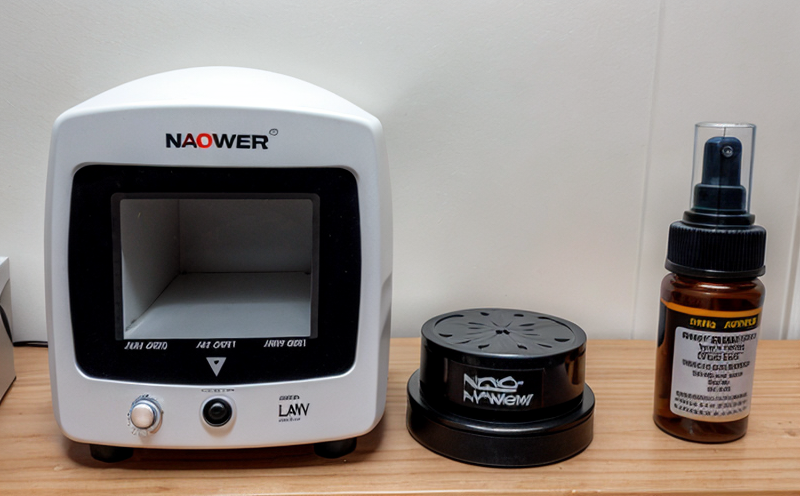ISO 21363 Transmission Electron Microscopy for Nanoparticle Characterization
The standard ISO 21363 specifies the procedure for the characterization of nanoparticles using transmission electron microscopy (TEM). This service is essential for quality managers, compliance officers, R&D engineers, and procurement teams working with nanomaterials. The test ensures that nanopowders meet the required specifications set by international standards.
The TEM technique allows for high-resolution imaging down to atomic scales, making it ideal for nanoparticle characterization. This service is particularly useful in sectors such as pharmaceuticals, electronics, materials science, and environmental science where nanomaterials play a crucial role. The primary purpose of this test is not only to assess the physical dimensions but also to evaluate the morphology and composition of nanoparticles.
The process begins with specimen preparation. The sample must be carefully dispersed in a suitable medium to avoid aggregation or clustering, which can affect the accuracy of measurements. Once prepared, the sample is introduced into the TEM. Under vacuum conditions, the electrons pass through the thin section of the sample, creating an image based on the contrast produced by the electron density differences within the sample.
The resulting images provide detailed information about the size, shape, and distribution of nanoparticles. This data is crucial for understanding the behavior and potential applications of these materials in various industries. The TEM test can also reveal defects or impurities that may impact the performance of nanomaterials.
Compliance with ISO 21363 ensures that the results are reliable, reproducible, and comparable across different laboratories. This is particularly important for regulatory compliance and quality assurance in sectors where precision and accuracy are paramount.
The test also provides insights into the stability of nanoparticles under various conditions, which is vital for their safe handling and use. By understanding how particles behave in different environments, manufacturers can optimize processing methods and improve product performance.
For quality managers and compliance officers, this service offers a robust tool to ensure that nanomaterials meet stringent regulatory requirements. R&D engineers benefit from detailed characterization data to guide further developments and innovations. Procurement teams can use the results to make informed decisions about suppliers and materials.
Scope and Methodology
The scope of ISO 21363 TEM testing encompasses a wide range of nanopowders and particulates, including metal oxides, carbon nanotubes, graphene, and other composite materials. The methodology involves several key steps:
- Sample preparation: Ensuring the sample is dispersed uniformly to avoid aggregation.
- Spectroscopic analysis: Measuring the elemental composition of nanoparticles using energy-dispersive X-ray spectroscopy (EDX).
- Morphological characterization: Detailed imaging of particle size, shape, and distribution.
- Quantitative analysis: Determining the number concentration and size distribution of particles.
The test also includes a detailed examination of any defects or impurities present in the sample. The results are reported according to the ISO 21363 standard, ensuring consistency and comparability across different laboratories.
For industry applications where precision is critical, such as pharmaceuticals and electronics, this level of detail is essential. By adhering to international standards, manufacturers can ensure that their products meet the highest quality and safety criteria.
Industry Applications
The ISO 21363 TEM test finds application in numerous sectors where nanomaterials are used:
- Pharmaceuticals: Ensuring that drug formulations contain the correct size and distribution of nanoparticles for effective delivery.
- Electronics: Verifying the integrity and performance of semiconductor materials at the atomic level.
- Metalworking: Monitoring the quality of catalysts used in chemical reactions to enhance efficiency.
- Environmental Science: Studying the behavior of nanoparticles in environmental systems to assess potential risks.
In each of these sectors, the ability to characterize nanoparticles accurately is critical for innovation and safety. By leveraging this service, businesses can stay ahead of regulatory changes and customer demands.
The test results are not only useful for compliance but also provide valuable insights into the behavior and potential applications of nanomaterials. This information can be used to optimize manufacturing processes and improve product performance.
Why Choose This Test
Selecting ISO 21363 TEM testing offers several advantages:
- Rigorous Standards: Adherence to international standards ensures reliable and reproducible results.
- Detailed Characterization: Provides comprehensive data on particle size, shape, distribution, and composition.
- Regulatory Compliance: Ensures that nanomaterials meet stringent regulatory requirements.
- Innovation Support: Data from this test can guide R&D efforts and improve product performance.
- Safety Assurance: Understanding nanoparticle behavior in different environments helps ensure safe handling and use.
- Consistency: Results are consistent across different laboratories, enhancing comparability and reliability.
- Customer Satisfaction: Providing high-quality products that meet customer expectations fosters long-term relationships.
The test is particularly beneficial for businesses operating in highly regulated industries. By ensuring compliance with international standards, companies can maintain a strong reputation and comply with legal requirements.





